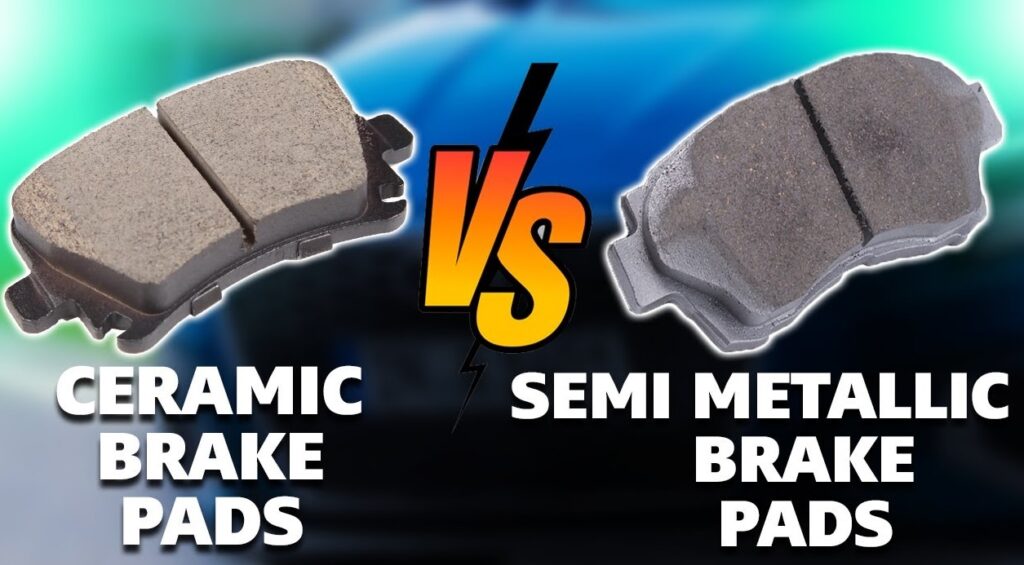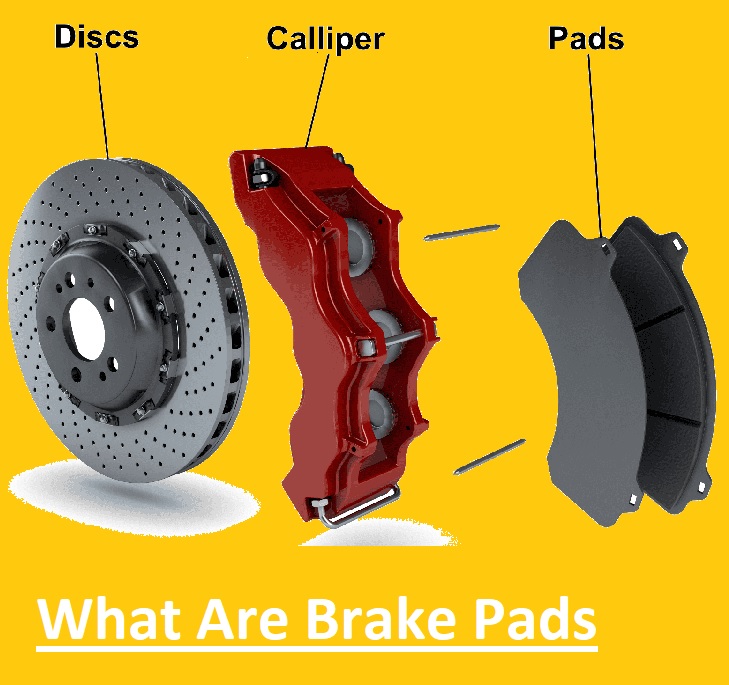The braking system of a vehicle is an important safety factor. If the brakes are not working well, it can cause a bad effect on driving. Basically, the braking system converts the kinetic energy of the car into friction that reduces tire speed and stops it. Brake pads are a friction source of the vehicle that applies forces against the braking discs of the car.
What Are Brake Pads?
- The brake pad is an important part of the friction in the vehicle’s braking system. Brake pads transform the kinetic energy of the car to thermal energy through friction.
- The brake comes with two brake pads where the frictional area faces the rotor.
- When we press the brake hydraulically, the caliper presses two pads on the spinning rotor, reducing speed or stopping the vehicle.
- When the temperature of the brake pads rises due to contact with the rotor, the friction transferred to the disc creates a dull grey coating.
- The brake pad and disc make a connection with each other, causing friction for the vehicle’s stopping.
Organic vs Ceramic vs. Metallic Brake Pads
Organic Brake Pads
- organic, made with asbestos, easily handles heat, and also controls wear and tear on brake pads.
- But asbestos is a potent carcinogen and also causes cancer. But this material brake pad wears with time, and asbestos sticks on tires and releases into the air.
- Due to the hazardous effects of asbestos, it is not considered good for braking systems.
- In place of asbestos, organic brake pads were made as a replacement.
- organic brake pads made with fiber and different materials like carbon compounds, rubber, fiberglass, etc., that are connected with resin.
- These materials produce less dust than metals; their manufacturing cost is also low.
- Compared to brake pads used in high-performance vehicles, organic pads cause high friction without producing high heat and are used for normal driving and commuting.
- Organic car brakes are noiseless and do not apply high pressures on brake rotors, since brake rotors have a high cost of repair when damaged.
Organic brake pads limitations
- Organic brake pads also have more limitations than other brake pads.
- It is a composite design and gets worn fast. so needed a replacement.
- It works well in low-temperature conditions but not for high-temperature conditions.
- Organic brake pads come with high compressibility, so we have to apply more pressure to apply the brakes.
Ceramic Brake Pads
- Ceramic brake pads are also part of the braking system. These pads are made with ceramic material that is commonly used in pottery and plates.
- Ceramic brake pads come with a copper fiber configuration that provides high friction and heat conduction.
Ceramic brake pads feature
- These brake pads operate noiselessly, so during braking there is very low noise.
- These pads, compared to organic brake pads, come with low dust and other hazardous materials when degraded.
- Ceramic brake pads work well in different temperatures as well as driving conditions.
LIMITATIONS
- These brakes are costly since high manufacturing costs are involved.
- Ceramic does not absorb heat like other materials, so high heat is produced during braking, and heat shifts to other parts of the braking system.
- It also causes more damage on braking parts. So ceramic brake pads are not the best option to use in bad driving conditions or racing conditions.
Metallic Brake Pads
- metallic brake pad, also called semi-metallic brake pad. These metallic brake pads come with 30% to 70% metals like copper, iron, steel, or composite alloys.
- These metals configured with graphite lubricant also fill the complete brake pad.
- Metallic brake pad compounds are available for use in track racing.
- Metallic brake pads are preferred for high-performance driving since they have good braking in larger temperature conditions.
- Metal is a good heat conductor, can handle high heat, and reduces braking system temperature fast.
- They also needed low pressures for the application of the brake pedal for stopping the car.
LIMITATIONS
- THEY CAUSE High noise compared to ceramic and organic braking pads and high pressures on the braking system cause high damage to brake rotors.
- It produces more brake dust than the other two types.
- its cost between the other two systems

Which braking pad is best? Brake Pad
- It is based on vehicle type and driving conditions. For high-performance sports cars, semi-metallic brake pads are used.
- While, for urban commuting, solid ceramic brake pads are best to use.
- For high mileage on a vehicle, organic brake pads are good to use; they are low-cost options.
| Type | Construction | Advantages | Limitations | used for |
| Ceramic Pads | copper powder, Ceramic fibers, resins, | noiseless, clean, stable, longer life | costly, less extreme bite vs sintered |
commuting, easy riders
|
| Semi-Metallic Pads | Metallic powder with resin | Strong braking, low cost | noise, wears rotors faster |
Medium bikes, budget riders
|
| Organic Pads | Resin, fillers, fibers, | Smooth, low cost, disc-friendly | Short life, poor heat resistance |
Small bikes, normal use
|
| Sintered Pads | Metallic powders are fused at high temperatures | braking force, high-temp resistance | high cost, aggressive on rotors |
heavy bikes Racing, extreme riding
|
Braking pads Maintenance
Brake pads needed maintenance about 5000 miles when facing high wear. Brake pad wear can be different for each vehicle.
- But normally it is recommended to use new brake pads after 50,000 miles, and brake discs work longer and are replaced after 70,000 miles.
- But if your brake pad is old and has wear needing replacement, it comes with some faults, and their causes are as
| Faults | Cause |
| Braking takes an abnormal force on the brake pedal |
damaged brake pads, faulty brake, caliper, vacuum losses, and brake fluid losses.
|
| The car pulls on single side at time, braking |
it occurs during non-working of the hydraulic system, brake pad lining contamination with brake fluid, bad brake caliper, or brake pad not fitted accurately.
|
| low braking performance |
brake pad lining soaked with oil, water, brake fluid, overheated brake pad lining, air exists in brake fluid, damaged brake pad, fluid boiled, leaking of fluid
|
| Sensitive braking |
faulty brake pad lining, brake pad lining has grease, valve not working, master cylinder pushrod not working
|
| Noisy braking |
damaged brake pads, brake pad not connected accurately, brake pad wear indicator
|
| Vibration under braking |
Contaminated rotors or pads, warped rotors, ABS activation
|
